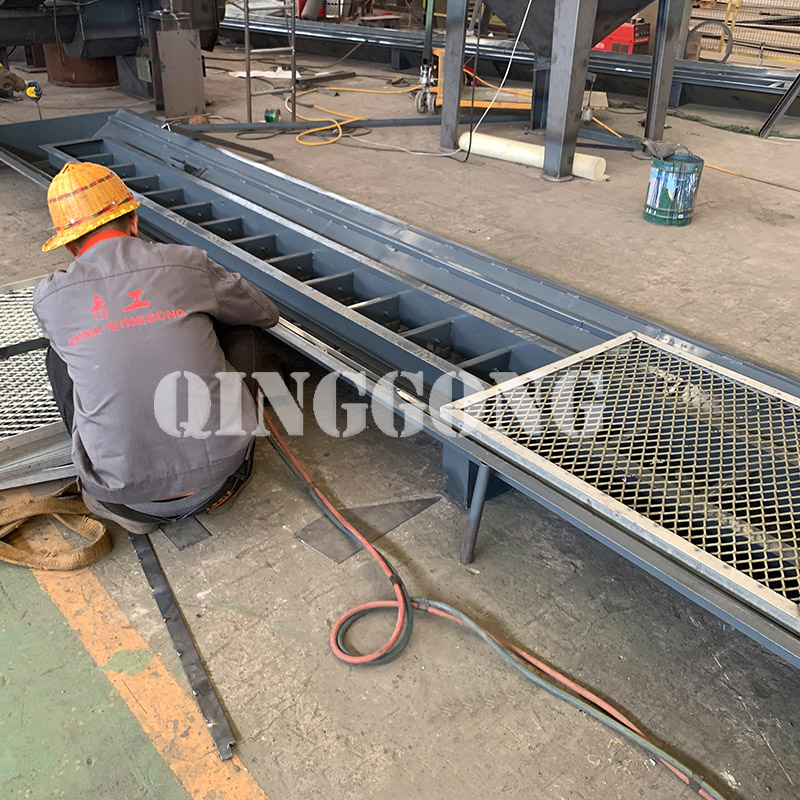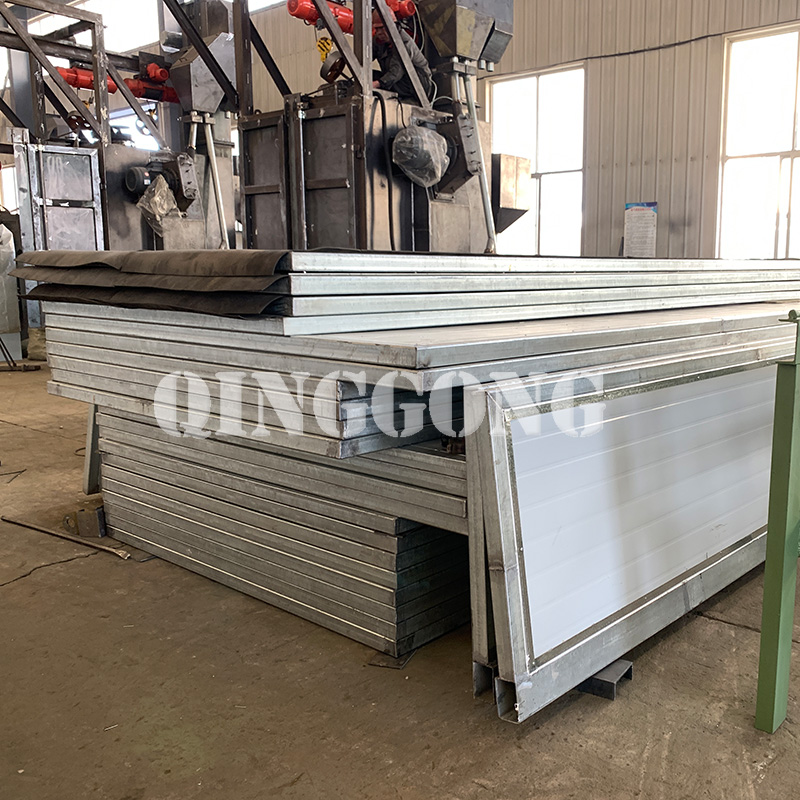In May, Qingdao Qinggong Machinery is producing a sandblasting room for customers in Australia. Let me give a brief introduction to this equipment.
The size of sand blasting room for sale is 13m*8m*6m, with H-shape abrasive recovery system. The abrasive recovery system for the blasting room has 4 parts: floor recovery, bucket elevator, and separator. Sandblasting room recovery system uses a floor recovery system to reclaim the used blasting media and contaminants into the bucket elevator and then into the air wash cleaner system, and then the cleaned abrasive get into the storage hopper to recycle, the residual will get out of the recycling system from the separator. The H shape abrasive recovery system uses 2 longitudinal scraper conveyor along each sidewall of the sandblasting room allowing the abrasive delivered from the blasting nozzle, which is either blown or rebounded off the workpiece, to strike the side walls and fall into the conveyors, automatically reclaiming approximately 60-90 percent of the blast media. The reclaiming abrasive on the floor is pushed into the scraper conveyors assemblies at the end of the work shift. This system is suited for medium to high production.
Before deciding on a blast room, it's best to familiarize yourself with some of the features common across most manufacturers. Almost all blast rooms feature a square roof design instead of hip-style roofs. The square roof construction allows for more operator movement, easier load-in, and load-out, and has better lighting. Light gauge hip roof models – which are often the cheapest on the market – may not provide the durability and usability you are looking for.

Wall and roof panels are usually available in thicknesses that range from 18 to 10 gauge or thicker. As a general rule, the heavier the wall thickness, the higher the cost. Everyone wants a heavy-duty blast room, but heavier construction often offers no real benefit because high-wear areas are typically covered by rubberized shielding.
Rubber lining protection is available for interior walls and doors for long-lasting life. Without lining protection, blast streams could rip off the functional coating from panels and cause premature wear and corrosion on the surface. QINGGONG’s exclusive rubber lining design makes it easy to install and replace the rubber sheet as the room ages.
The blast room is commonly equipped with a moderate number of multi-tube fluorescent light fixtures and feature safety glass in order to meet code.
The blast pot (also referred to as a blasting pot, pressure pot, pressure vessel, media blaster, or portable blaster) is the appliance that does the actual blasting. There are a number of blast pots on the market, but all of them work essentially the same way. A blast pot is a pressurized container with a hose and spray nozzle attached. Abrasive media is loaded into the blast pot and sealed air-tight. Once sealed, the media is pressurized using compressed air. A valve at the end of the hose is controlled by the operator. When the valve is opened, compressed air forces the media to travel down the hose and spray out the nozzle.


